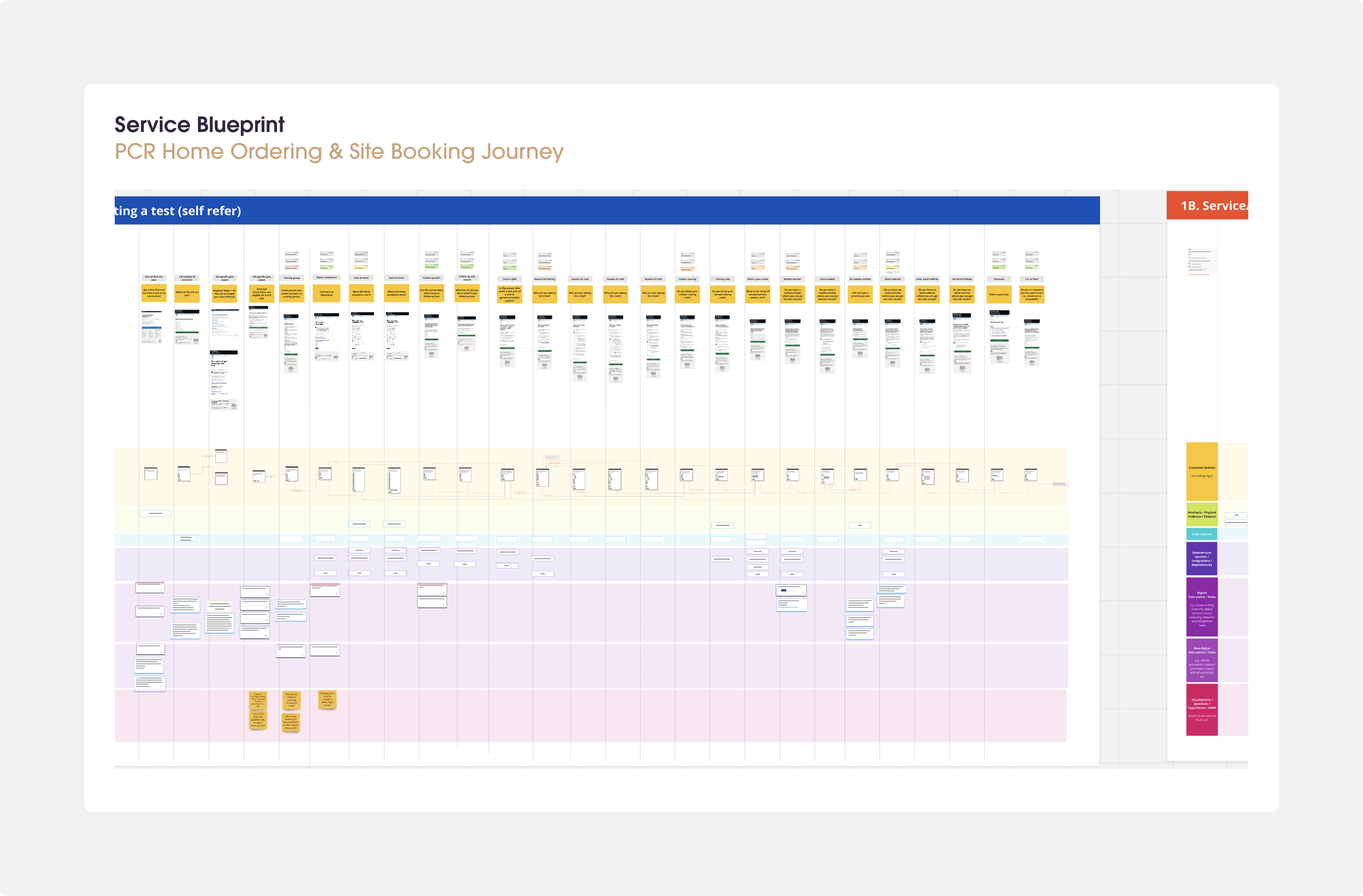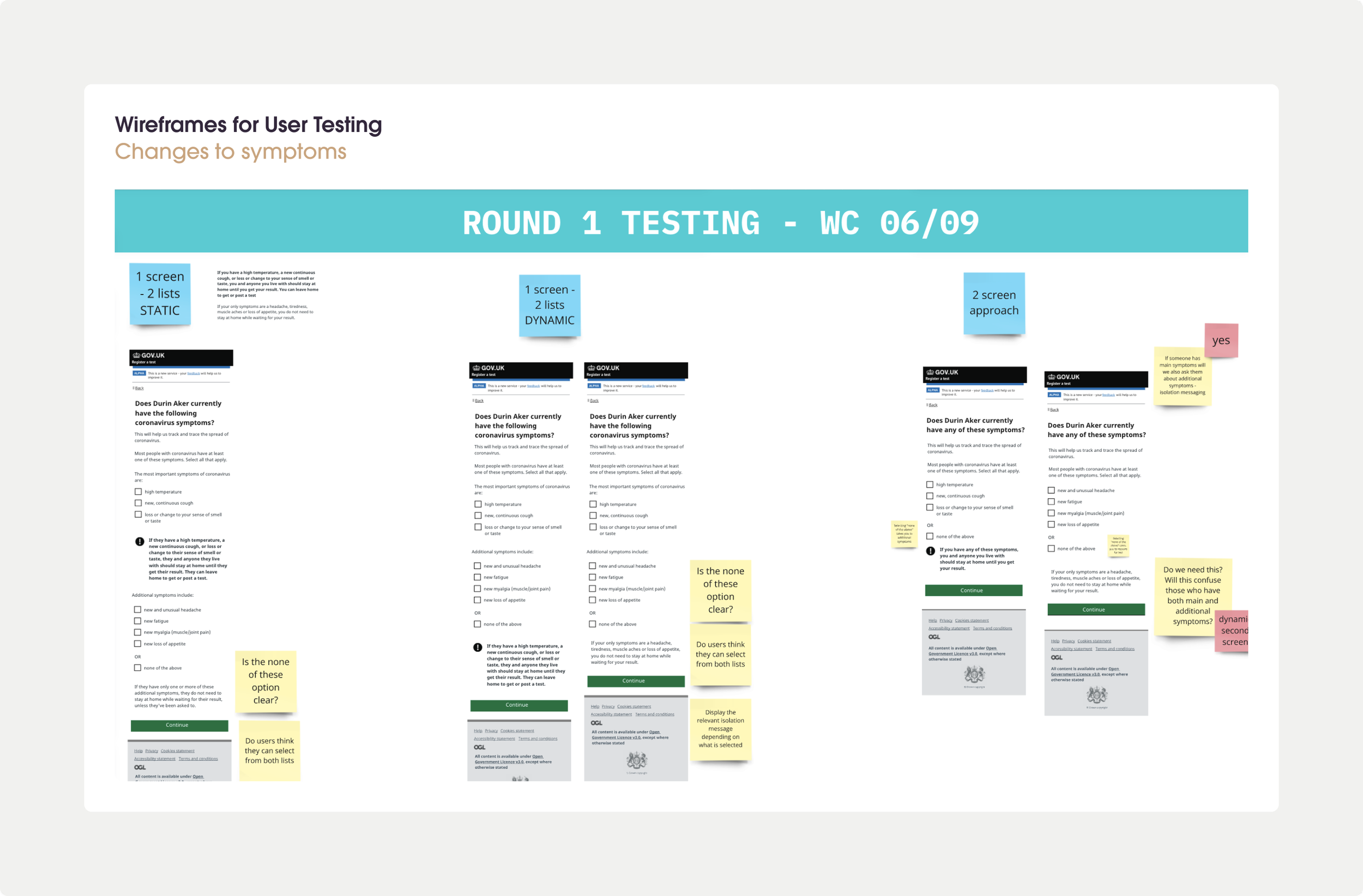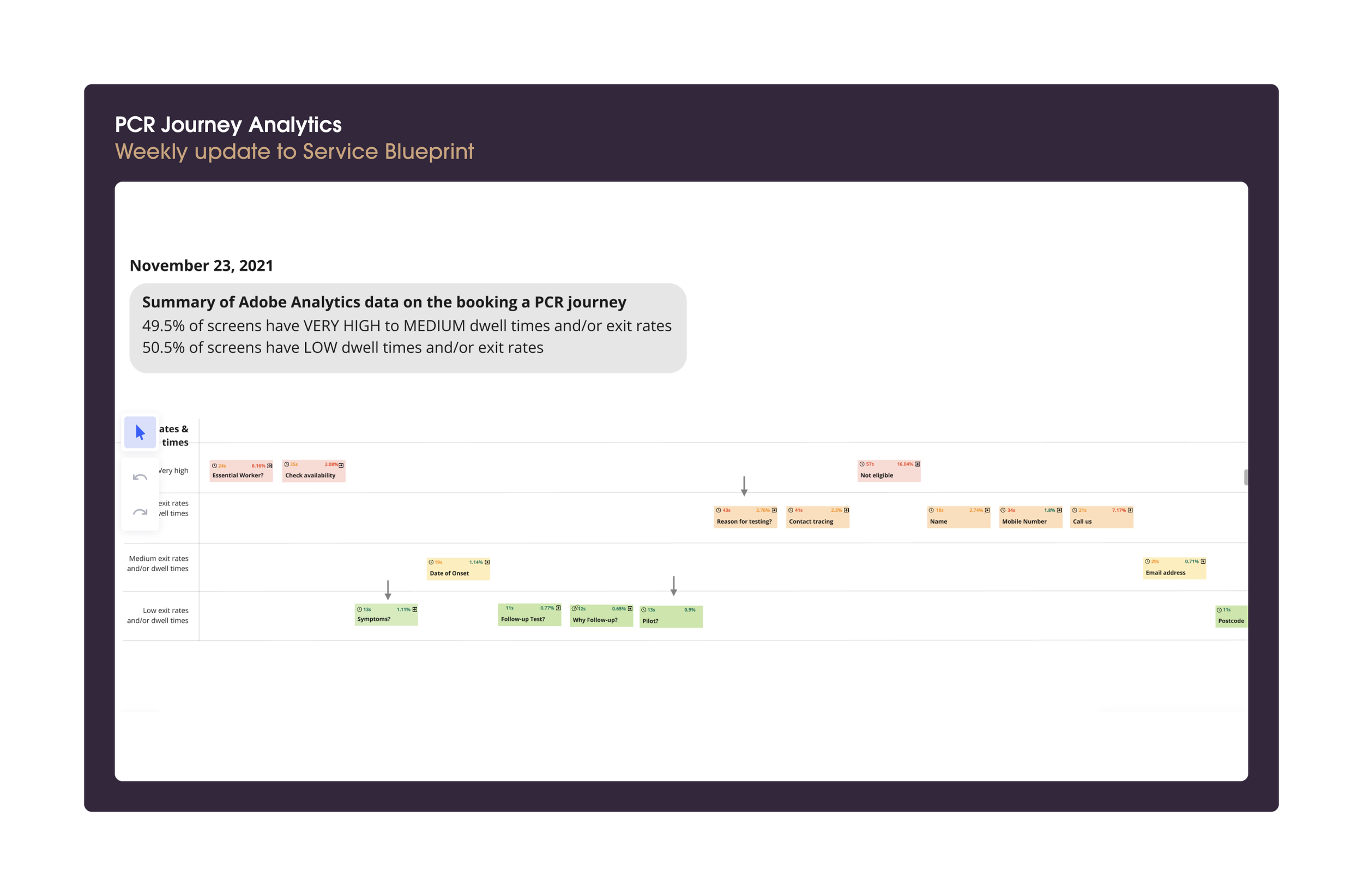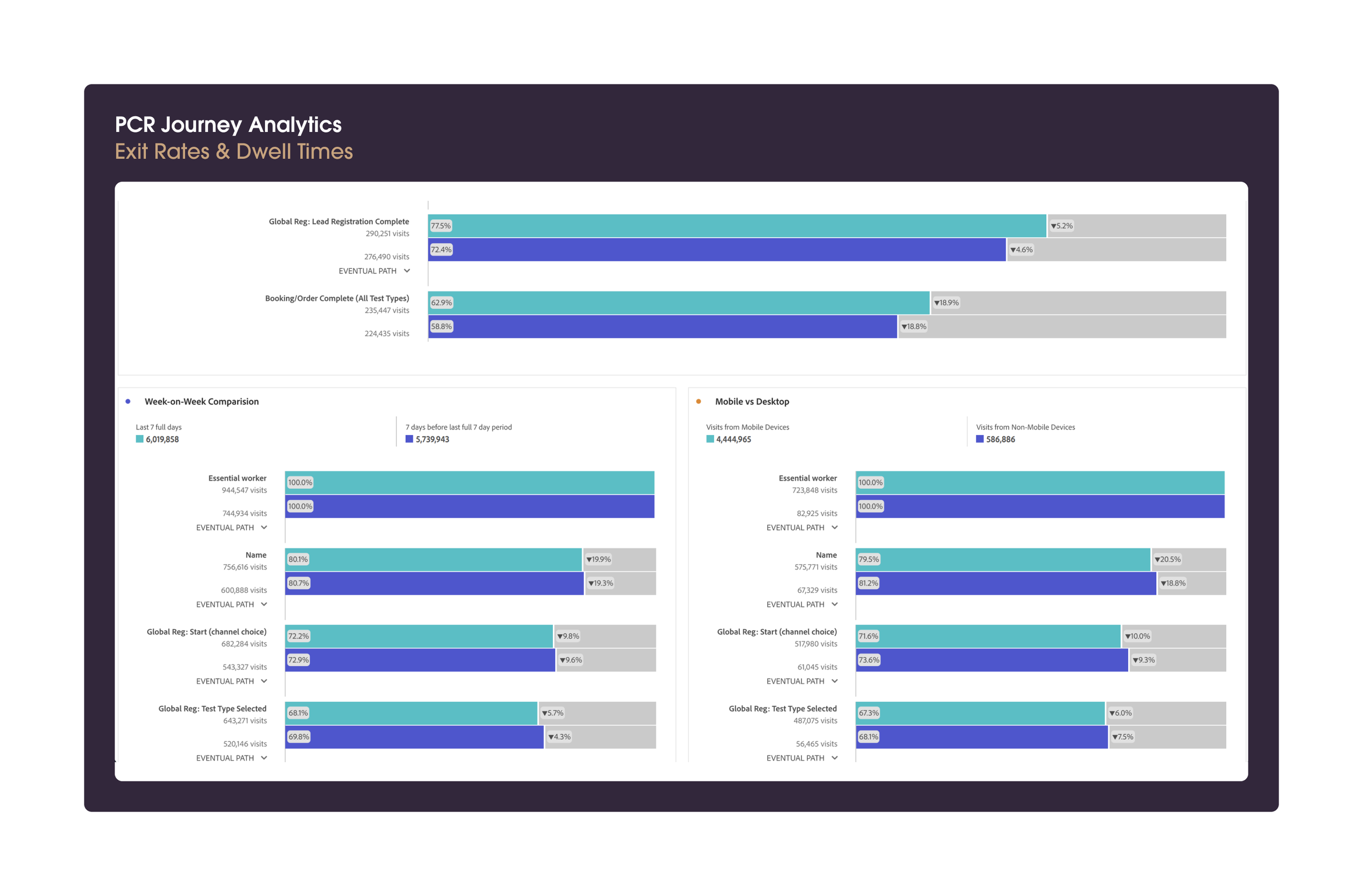NHS Digital
Challenge
Amid the rapidly evolving COVID-19 pandemic, NHS Digital needed to create a user-friendly platform for citizens to order PCR tests. The service had to collect critical clinical data and confirm eligibility while adapting to constantly changing public health policies. The challenge was to design a clear, accessible experience that worked for all users without compromising accuracy or compliance.
My Impact
As the senior designer on the PCR test ordering platform, I was responsible for shaping the user experience, coordinating research, and managing stakeholder alignment across product, policy, and clinical teams. I maintained the service blueprint, identified design impacts from policy changes, and ensured timely handovers to engineering as the service evolved week by week.
Solution
I designed clear, user-friendly flows that simplified eligibility checks and data collection for a wide range of users. Each design was documented with the clinical or policy reasoning behind decisions, making it easy for the wider team to understand and adapt as guidance changed. Usability, readability, and accessibility were central to every iteration, ensuring that people of all backgrounds could complete the journey confidently. Weekly user research and analytics informed ongoing improvements, helping the service stay effective and up to date throughout the pandemic.
Role Service design & UX design | Year 2021-22
Process
Service Blueprint
Navigating Constant Change
The PCR test ordering journey was updated on a weekly or bi-weekly cadence to maintain alignment with changes in public health policy and the progression of the pandemic. We worked in cross-functional teams, and I collaborated very closely with the PCR product owner and business analyst on design requirements.
Whenever the PCR journey required intervention, my first step would be to identify, in the service blueprint, which parts of the journey would be affected by the change. The identified sections would then be designed (or redesigned) as necessary, and the service blueprint would again be used to assess the potential cascading effects of those changes on the entire flow of the journey.
Wireframes & UX Flows
Designing for Clarity and Adaptability
created wireframes and UX flows that would be used by the team for feedback and iteration, as well as for early user testing. These design artefacts were annotated with clinical or policy reasons for specific changes. In this way, and in such a fast-paced environment, they also doubled as a tool for communicating and documenting the rationale behind the designs with the wider team.
User Research
Listening to Diverse Voices
Understanding the diversity of user needs was critical to our success. My team conducted weekly user research interviews with citizens from various backgrounds and differing levels of English language proficiency. Testing was central to our process, with each iteration of the PCR journey being validated before release.
A/B testing helped us evaluate different design options to ensure the most effective solutions were implemented. All user testing sessions were conducted remotely over Zoom or MS Teams, maintaining accessibility and efficiency during the pandemic.
“I would self- isolate with symptoms full stop regardless of the three-symptom warning.”
“This version would save a lot of time in checking out other sites and researching”
Implementation & Live Monitoring
Continuous Optimisation
One of my key responsibilities was ensuring a seamless design-to-engineering handover. By delivering high-quality Sketch files and ensuring adherence to the design system, I facilitated efficient collaboration between teams.
After the designs were live, we monitored the platform’s performance through Adobe Analytics. I updated the service blueprint weekly, tracking key metrics such as exit rates and dwell times on specific screens. This data-driven approach allowed us to continuously improve the user experience and measure the impact of design changes on journey completion rates.








